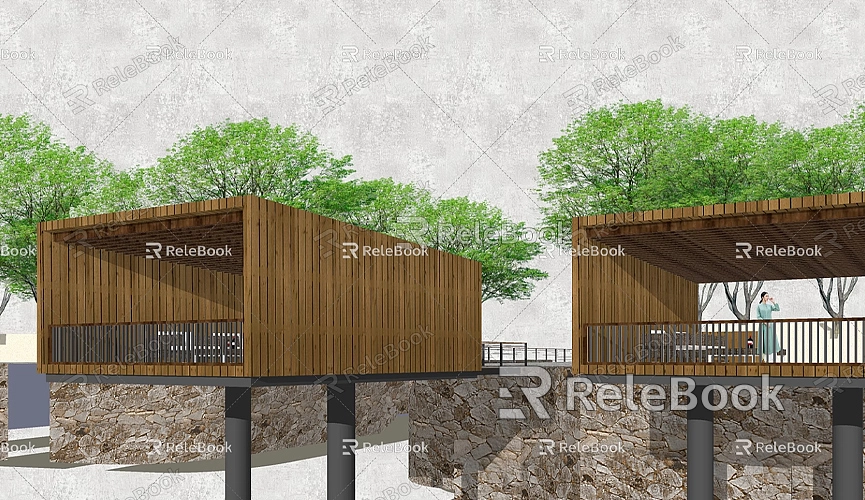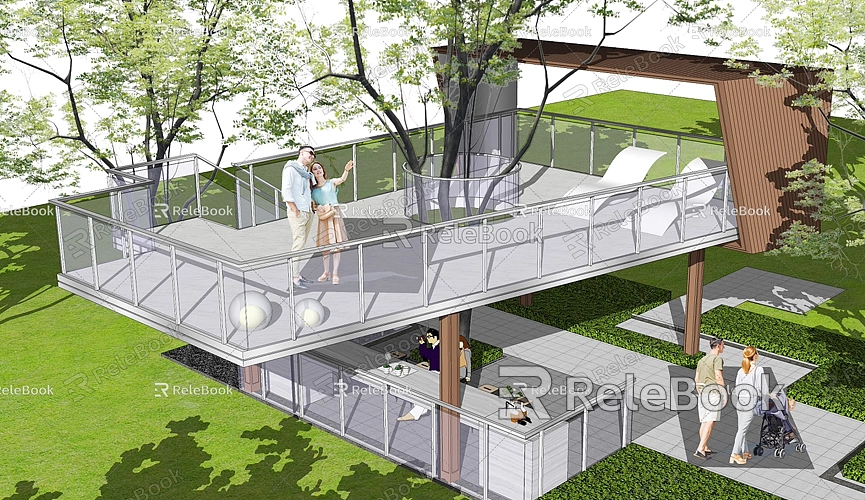How to Reduce File Size of SketchUp Model
In the process of 3D modeling, especially when using SketchUp, file size can become a significant issue. Larger files not only slow down software performance but can also complicate sharing and storage. Effectively reducing the file size of SketchUp models is a challenge many designers and modeling enthusiasts face. In this article, we will share practical methods and tips to help you optimize your SketchUp model and reduce its file size.
First, it's essential to understand the sources of file size. The size of a SketchUp model mainly depends on the number of geometries, materials, components, and images used in the model. If your model contains a lot of complex geometries or uses high-resolution textures, the file size will increase significantly. Therefore, reducing unnecessary geometries and optimizing material usage are key to minimizing file size.

Before making changes, it's advisable to organize your model first. Use the "Component" feature to convert repeated elements into components, which can greatly reduce the number of geometries. Components are reusable elements; modifying one component will update all instances, thus reducing file size. Select similar elements in the model, right-click, and choose "Make Component," then name it for easier management.
Additionally, minimizing unnecessary details is another important step in reducing file size. For less visible parts, consider simplifying their geometry. For instance, complex decorations, excessive lines, and small components can be simplified to lower complexity. Using the "Merge" tool to combine multiple faces into one can help streamline the model and improve performance.
When it comes to materials and textures, proper optimization can also significantly reduce file size. Using low-resolution textures or compressed images can effectively decrease file volume. Generally, images at 1080p or 720p are sufficient for most models. If you're using high-resolution images, you can compress them using image editing software or use smaller image files directly in SketchUp.
While using the "Materials" window, avoid using too many different materials in the model. Merging similar materials into one not only reduces file size but also makes the model look more consistent. You can quickly change materials by selecting multiple faces and right-clicking to apply the material.
When handling the model, using the "Geolocation" feature to remove geographical data is also a good optimization method. Geolocation data often increases the file size but does not significantly impact the model's appearance. If you don’t need geographical data when presenting the model, consider removing it.
Moreover, if your model contains many images, videos, or links, it's wise to organize and delete unnecessary parts. Embedded images and videos in SketchUp files can significantly increase file size, and these excess elements are sometimes completely unnecessary. Check and manage embedded files in the "Model Info" to promptly delete what you no longer use.

After completing the above steps, you can use SketchUp’s “Purge” function before saving the model. This feature helps quickly identify and remove unused components, materials, and layers in the model. After purging, the file size often decreases significantly. By clicking on the "Window" menu, selecting "Model Info," and then choosing the "Purge" option, you will see what extra parts can be deleted.
If the file size still hasn’t improved noticeably after purging, consider exporting the model to another format. Exporting the SketchUp file as an OBJ or FBX format and then re-importing it back into SketchUp can eliminate some unnecessary metadata and information, thus reducing file size.
Using plugins appropriately can also enhance efficiency while working in SketchUp. There are many plugins specifically designed to optimize models and reduce file size, such as the “CleanUp³” plugin, which helps users clear out excess elements in their models. Additionally, some rendering plugins, like V-Ray, allow you to select suitable options in rendering settings to lower model complexity and consequently reduce the final file size.
If you need high-quality 3D textures and HDRI for your models and virtual scenes, you can download them for free from [Relebook](https://textures.relebook.com/). Using high-quality resources can enhance the visual appeal of your model while maintaining a manageable file size. If you need exquisite 3D models, visit [Relebook](https://3dmodels.relebook.com/) for a wealth of quality resources.
After completing all operations, remember to save your work regularly. Frequent saving can prevent data loss and ensure your progress is protected. In SketchUp, you can choose the “Save” option in the “File” menu or use a keyboard shortcut. It’s also advisable to develop a backup habit, storing important files in cloud storage or on an external hard drive to prevent unexpected data loss.
Lastly, staying updated on new tools and resources is crucial. With the continuous evolution of design technology, new 3D models and optimization tools are always emerging. Regularly keeping up with industry trends and participating in relevant training can help you remain at the forefront of design.
Reducing the file size of SketchUp models is a process that requires patience and attention to detail. From organizing the model and simplifying geometries to optimizing materials and using plugins, each step can help improve your workflow and lower file size. We hope this article assists you in optimizing your models in SketchUp and enhancing your design skills. If you need high-quality 3D textures and HDRI, download them for free from [Relebook](https://textures.relebook.com/). For exquisite 3D models, visit [Relebook](https://3dmodels.relebook.com/) for a variety of quality resources. May your design journey be smooth, and may you create even more outstanding works!

